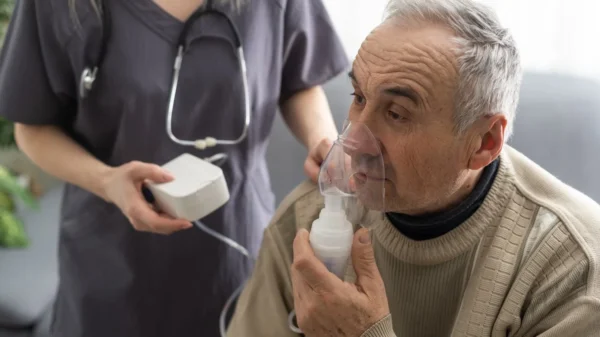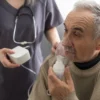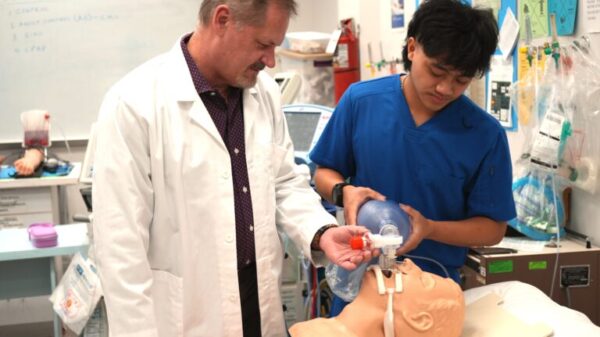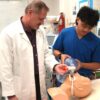If every American citizen who is eligible for lung cancer screening would take the time to get themselves checked out thousands of lives could be saved every year.
This was the key finding of a new study spearheaded by the American Cancer Society. Researchers from the non-profit published an article about the benefits that uptake of low-dose computed tomography scans would have in the Journal of the American Medical Association (JAMA) on Nov. 19.
According to their findings, only about one out of five eligible U.S. residents received a scan in 2024. If all of those eligible would get screened up to 62,000 lives could potentially be saved within the next five years, they determined. This number would represent a three-fold increase in the number of prevented deaths and 870,000 years of life gained, approximately.
Study lead Dr. Priti Bandi highlighted the American Cancer Society’s disappointment that screening rates remain so low. Bandi currently serves as the organization’s Scientific Director.
“We need to raise these screening numbers,” she said. “If you’re aged 50-80 and have ever smoked, talk to your doctor to find out if you’re eligible for lung cancer screening and whether it would be appropriate for you.”
For their research, the investigators used data taken from last year’s National Health Interview Survey. It is an initiative from the Centers for Disease Control and Prevention (CDC) that monitors the health of citizens throughout the country. This survey is the largest and oldest national health survey in the United States.
Through examining the data, the researchers determined that only 18.7 per cent of the 12.76 million eligible individuals nationwide were up to date with screening. If this trend continues, lung cancer screening with LDCT will only be capable of saving 14,970 deaths by late 2030.
“I’m glad to see JAMA is giving light to data and editorials that highlight how UNACCEPTABLE the rates of screening continues to be,” commented Drew Moghanaki, Chief of Thoracic Oncology at the UCLA Jonsson Comprehensive Cancer Center in California.
Read more: Breath Diagnostics leaders promote their mission at Miami investment conference
Research highlights need for expanded criteria
The study has also thrown the eligibility criteria for lung cancer screening within the U.S. into question. Bandi stated that the eligibility criteria should be broadened in a news release from the American Cancer Society.
It also draws attention to the need for efficacious new screening technologies that overcome the current financial strain that relying on LDCT places on the healthcare system. The high costs associated with operating and maintaining these machines is the primary reason that eligibility is limited to older citizens with a history of tobacco smoking.
American Medicare and private insurance operators will only cover people aged 50 to 80 with at least a 20 pack-year smoking history who quit less than 15 years ago or still smoke. When considering false positives that these devices often yield, annual screening costs for one individual can total up to US$1,600.
Moreover, the cost of surgery for the 1 to 3 per cent that have a benign nodule misidentified by the machine as lung cancer can costs millions.
Read more: Breath Diagnostics adopts state-of-the-art mass spectrometer device for lung screening
Need for new screening options also comes to mind
These highly concerning statistics draw attention to the dire need for alternative lung cancer screening measures that limit expenses, false positives and radiation exposure.
Breath testing is one screening modality that is being considered as a viable alternative with advantages. OneBreath from Breath Diagnostics is one of the most advanced and thoroughly tested. Although it has not yet received FDA approval, extensive clinical research involving over 800 subjects has validated this emerging system’s efficacy.
Additionally, sputum/phlegm analysis, blood biopsies and urine testing. bioAffinity Technologies Inc (NASDAQ: BIAF), Grail Inc (NASDAQ: GRAL) and the University of Cambridge have been excelling with development of these screening modalities.
bioAffinity recently published clinical case studies on its CyPath Lung mucus screening tool that were viewed favourably by investors.
Companies like these have been proving that the future of lung cancer screening may not have to involve cumbersome equipment and that there are other low-cost options for detecting the world’s deadliest cancer.
Read more: Breath Diagnostics tech achieves pneumonia prediction breakthrough in peer-reviewed study
Follow Rowan Dunne on LinkedIn
rowan@mugglehead.com














